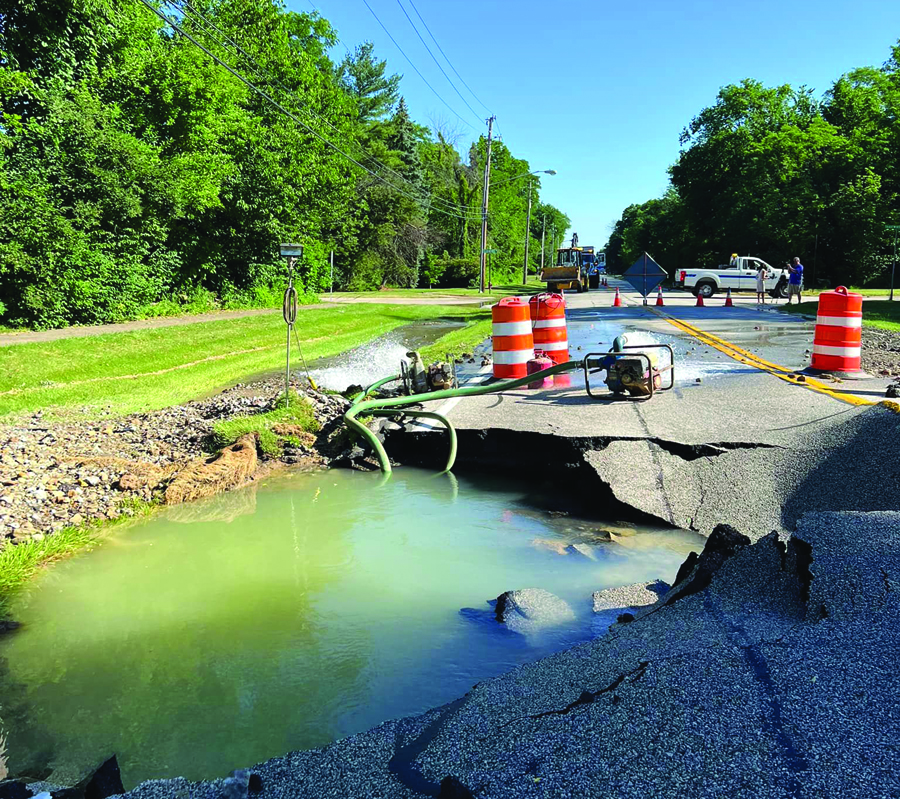A water main break took place on Tuesday, June 21, on West 130th Street between Drake Road and Bennett’s Corners, near Tradewinds, in Ward 5. The break took place at about 2 a.m.
Ward 5 Council Representative Dawn Carbone-McDonald said that the break caused flooding for some residents in the area and caused a large sinkhole in the roadway. The roadway was then closed between Drake and Hunt Roads. There was a no boil alert issued by the City of Cleveland, Division of Water. According to Ward 6 Council Representative Mike Wos, “The cities of Strongsville and North Royalton have contracted Crossroads Asphalt to make the pavement repairs today, Thursday, June 23.”
If a water main break or leak occurs, residents should call the CDW emergency call center at 216-664-3060. The center is open 24 hours a day. When calling, residents should know the following information in order for the quickest response:
• The street name, address and city
• Is there a safety issue involved
• If there is damage, such as flooding or the road is damaged
• How much water is flowing, from a trickle to a major flow
• Is it causing a major service disruption to customers
• Are there dangerous conditions, such as icy surfaces or street depressions
Once they receive the report, an investigator from the CDW will be dispatched to the area in order to investigate the situation and determine the severity of the break or leak. “The investigator may take the step of partially shutting valves in the area, to reduce the amount of flooding damage but still allowing some water service to customers until the repair crew can arrive,” according to CDW officials. “Based on observations, the investigator will re-prioritize the leak, potentially as an emergency if warranted, and will put the area into a temporarily safe condition. The status of all active repairs is constantly assessed and prioritized by managers, who will dispatch the next available pipe repair crew based on priority.”
When the repair crew responds to the area of the break, they will first set up a safety perimeter. Then they will locate the leak and the valves that feed the broken main will be turned off, possibly causing a temporary disruption in water service to customers in the area. When this happens in repairing a non-emergency break, and if allowable, crews will go door-to-door to notify residents, allowing them some time to store some water before it is turned off. “The crew then will begin digging to expose the broken water main. Once exposed, the crew will determine what type of repair can be made or if a section of the water main will need to be replaced. Sheeting may need to be placed in the excavation, the repair is made, and then water service is restored. The final step is filling in the hole and preparing it for the restoration process. A typical repair can take anywhere from 4-6 hours, depending on the type of repair and the location of the break,” according to the CDW.
By GLORIA PLEVA KACIK
Contributing Writer






